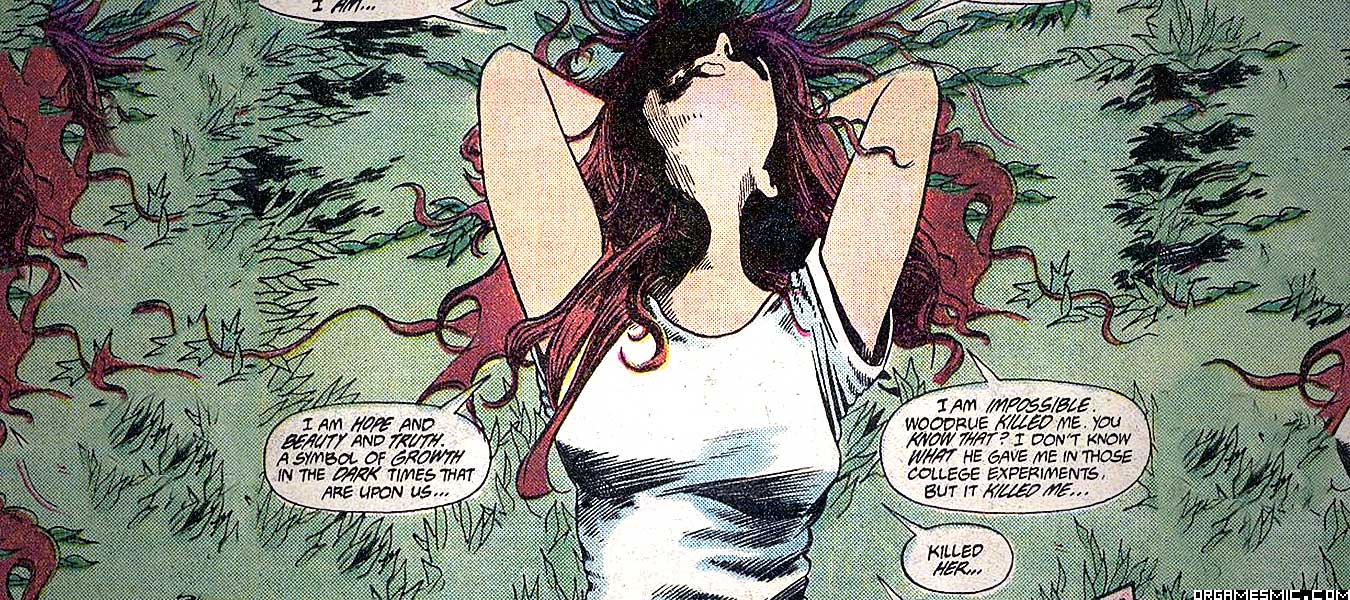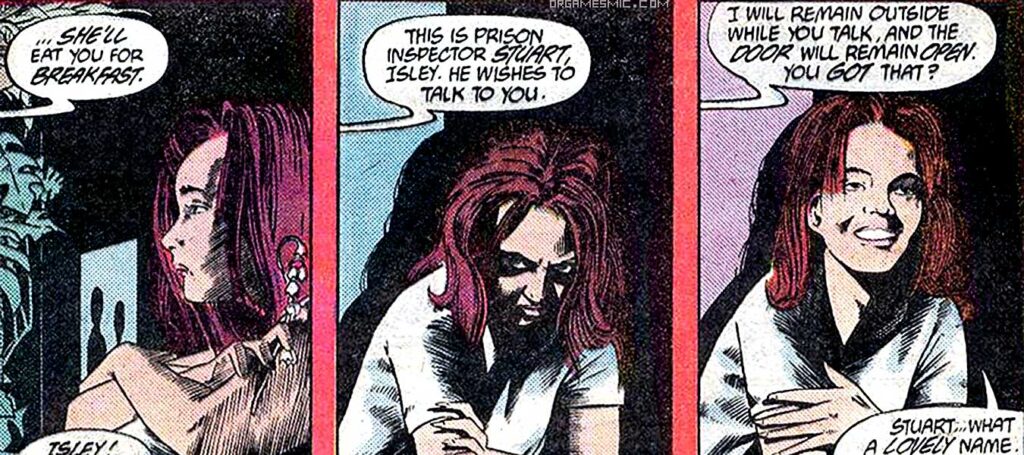This page may contain one or more affiliate links, which means that if you purchase a product through that link, I may receive compensation. The links will be identified with the text "affiliate link". Click to learn more.
Any Batman fan knows about the seductive and elusive Poison Ivy, the botanist that cares about plants more than humans, and willing to kill in order to do what she feels is right. She has also become known for being a sensual character, associated with sometimes having a relationship with Harley Quinn. Knowing about this villain may make fans wonder about the particular Poison Ivy comic that reveals her origin, since it would explain her motives. The answer can be found in Secret Origins 36.
In this comic, the story starts with a man named Inspector Stuart wanting to have a word with Poison Ivy while she is in prison. He comes up with some BS cover story to talk to her, and starts asking her questions. She puts on a fake persona with a smile that infatuates Stuart. She says that her real name is Pamela Lillian Isley, but he can call her Ivy. After leaving her cell, Stuart continues to look at her on a security camera, and watches her undress. He later has a coffee date with Paula Goldlum, a guard that works in the women’s section of the prison. The narration reveals that he was locating super-crooks for suicide missions. (This means that he was considering recruiting Poison Ivy for The Suicide Squad.)
Stuart talks to Ivy again the next day while she is eating breakfast in her cell. She says that she was an ugly little kid with buck teeth, plump, and with stupid hair. She mentions that she lived in Seattle with her rich parents and was an only child. One interesting thing she points out is that she had always wanted to be a botanist, and would talk to her plants. She goes on to say that flowers were what she had instead of a happy childhood. She claims that she went to college and studied under a man named Jason Woodrue, also known as The Floronic Man.
The most interesting thing in this comic is that she says that she was in love with Batman. She had pictures of him on her wall, and wanted to meet him. This is the reason why she put the costume together and went to Gotham. She claims to have courted him slowly and sweetly, attracted his attention, and demonstrated her passion. There’s a panel of Ivy kissing Batman, which is a reference to the 1940 run of Batman, issue 181. (The first appearance of Poison Ivy.) After being rejected by Batman, she discovers that she is good at achieving power through money and seduction. (Like when she seduced Robin, one of my favorite stories.)
That night, Inspector Stuart has more coffee with the prison guard Paula, sleeps with her in his hotel room, but still can’t get Poison Ivy off his mind. He thinks of her smile, her hair, and her scent. His thoughts intertwine and tangle until he decides to go down to the warden’s office in the prison. He convinces him to allow him to take Ivy out to the prison garden and talk more. Ivy reveals that her powers came from Jason Woodrue’s college experiments. She says that she is part plant, even though it doesn’t show. She is able to “make plants behave like animals, and make animals into plants.” The comic ends with Stuart recommending that Ivy gets transferred to Arkham Asylum.
The artist of this story is Mark Buckingham, someone who apparently spent a lot of time studying figure drawing, because every face looks like it came from a photograph. This comic doesn’t say who inked it, so I assume it was also Buckingham. This was probably not a wise decision, since much of his shading technique depends on hatching, something that doesn’t translate well when going from pencil to ink. Using this sort of photo-realistic look doesn’t seem to work well with comic books, since its diluted translation to simpler shapes on paper has an awkward look. This is a classic tale, so be sure to get (Affiliate Link) the best Poison Ivy comic while you can.
Poison Ivy, known for her seduction powers, is a great role model for women everywhere. Nothing says empowerment like using your sexuality to manipulate others and get what you want. It’s especially inspiring to see her use these powers to get rejected by Batman and then turn to a life of crime. Who needs a happy childhood and a fulfilling career when you can have a botanically-enhanced body and a life of villainy?
Why She Stands Out
An aspect that makes Poison Ivy different from other comic characters is her distinct supernatural abilities. Being a botanical biochemist, she possesses power over plants – able to command them and bend them to her will. This alone makes her an adversary that heroes must fear because she can easily use her plants as weapons or traps. Moreover, this power allows Ivy to regenerate swiftly and protect herself against poisonous attacks, rendering her a highly challenging opponent.
Poison Ivy is more than a supervillain. She is also a person of depth and character, who possesses complexity and contradictions. Her story about the scientist who has become an eco-terrorist makes it easier for readers to identify with her and see the depth of this figure. She is not just a simple villain but a cause-driven character, struggling for an ideal that she believes in. That has made her an interesting figure in comic books, one who can easily capture one’s curiosity.
Poison Ivy’s role is also symbolic of the broader messages that can be learned about environmentalism and the impact humans have on the earth. This is demonstrated by her fanatical passion for plants and her intent to shield them from harm. It points out, particularly in relation to deforestation and loss of nature. The character serves as a warning to readers about the significance of maintaining the environment and neglecting it as well.
In addition to her own powers and character, Poison Ivy is also a catalyst for the growth of other DC Universe characters. More specifically, she has an integral aspect of her character through her relationship with Batman. These two are always on the opposite side of law and order, but at the same time, there is a dynamic connection between them that adds layers to both characters. Some of these relationships have been investigated in many comic storylines, which have become fans’ most loved.
The presence of Poison Ivy in comics has also enabled more diverse and complicated women. Poison Ivy’s character was a breakthrough in a domain that was once dominated by male superheroes, allowing more female heroes to take leading parts. She is a tough and fierce lady who can keep up with any man; her participation in comics helps overturn the conventional role of women always being portrayed as helpless victims waiting for rescue.
It’s more than the seductive and deadly image of Poison Ivy that has made her such an integral part of the comics. She is a symbol, a grandiose statement about environmentalism, adding dimension and complexity to the DC universe, which is one-dimensional enough by its own rights. She was there and will continue to be a trailblazer for introducing diversity in female characters with her strong-mindedness and strength.



